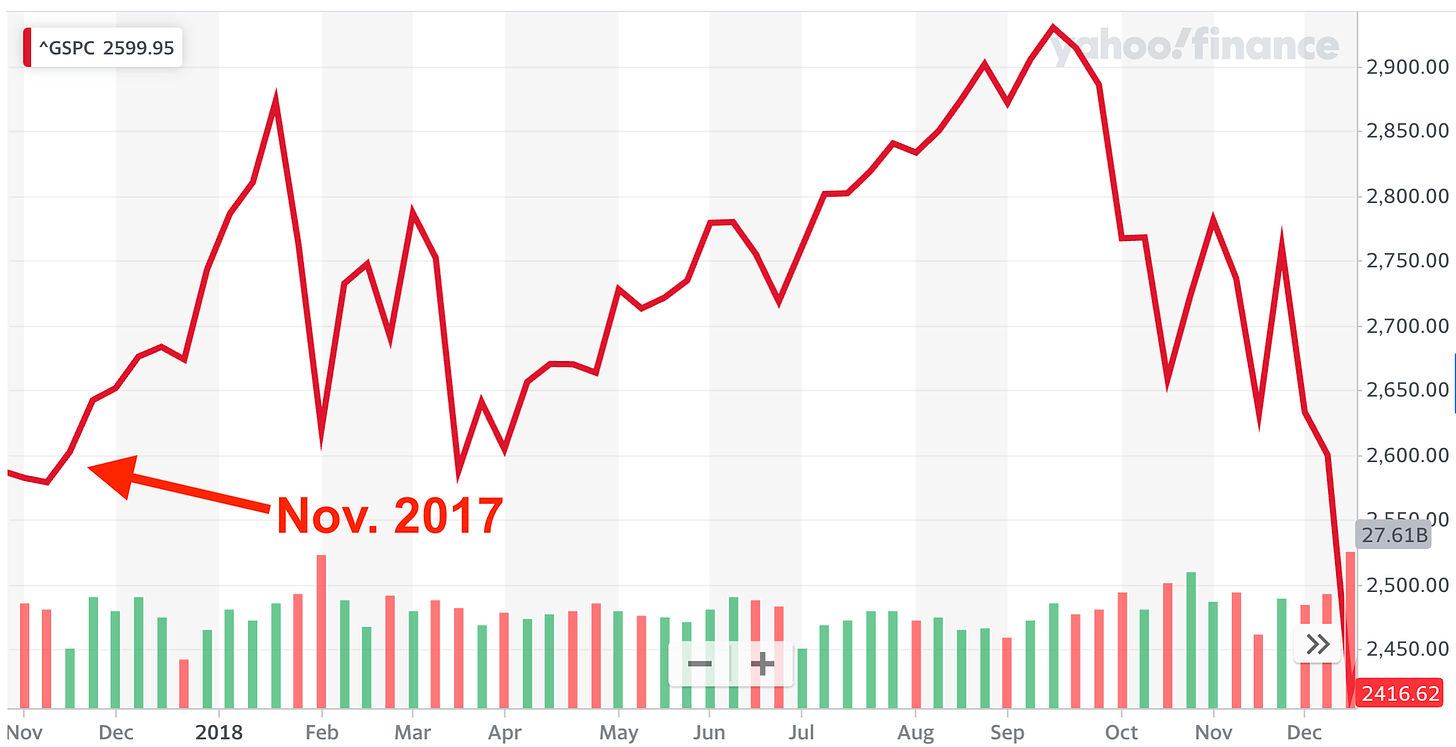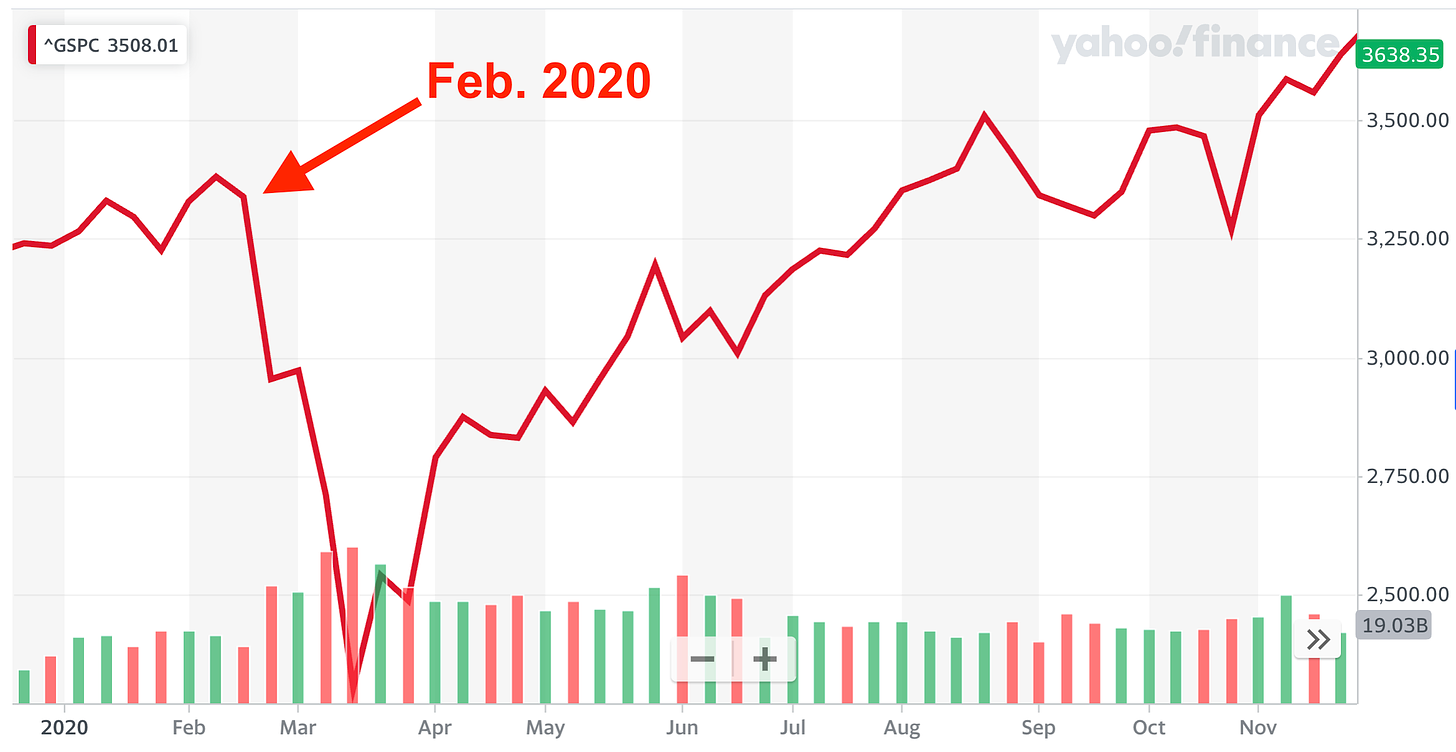Stocks ticked lower last week, with the S&P 500 declining 0.7% to close at 4,288.05. Down 4.9% in September, it was the worst month for the S&P since December. The index is now up 11.7% year to date, up 19.9% from its October 12 closing low of 3,577.03, and down 10.6% from its January 3, 2022 record closing high of 4,796.56.
It’s difficult to truly know what’s moving markets in a given day, week, or month.
One thing that’s for sure is there’s always a long list of reasons to be worried and dump stocks. So during those stretches when markets are down, it’s pretty easy to just back into a narrative that seems to make sense.
But have there ever been periods where there wasn’t much for market participants to be worried about?
Two Times The Market Didn’t Seem Worried
I can recall two times in recent memory when the market environment seemed pretty comfortable.
In the fall of 2017, everything in the economy seemed to be moving in the right direction while the stock market was trading at all-time highs. And consumers took notice. From the University of Michigan’s November 2017 consumer sentiment survey (via Myles Udland, emphasis added):
“What has changed recently is the degree of certainty with which consumers hold their economic expectations. In contrast to the media buzz about approaching cyclical peaks and an aging expansion, with the implication of greater uncertainty about future economic trends, consumers have voiced greater certainty about their expectations for income, employment, and inflation. Inflation expectations have shown the smallest dispersion on record, and increased certainty about future income and job prospects has become a key factor that has supported discretionary purchases.”
When’s the last time you’ve heard the word “certainty” used so frequently in the context of the markets or the economy?
Early 2020 was another period where things seemed to only be looking up. Consumer confidence was even higher then compared to late 2017. Here’s a sampling of what Wall Street strategists were saying that February (again via Myles):
“We've postulated that the most compelling bull case right now is that there is no credible bear case at the moment, especially with evidence mounting that global economic momentum is improving — virus disruption aside.” - David Lefkowitz, UBS Wealth Management
“We stay ‘irrationally bullish’ in [the first quarter].” - Michael Hartnett, Bank of America
Of course, the market would prove cruel.
The period of certainty in the fall of 2017 was followed 2018, one of the rare years when the stock market ended the year lower.
(Source: Yahoo Finance)
And Myles’ piece in February 2020 almost perfectly marked the prepandemic market peak.
(Source: Yahoo Finance)
There’s No Shortage Of Things To Be Worried About Today
Irony certainly isn’t not lost on the market. This summer’s stock market slump was preceded by a period during which economists scaled back recession expectations and strategists revised up their stock market forecasts.
To be fair, there’s a lot to be worried about these days: Interest rates are rising, oil prices are up, the dollar has been strengthening, monetary policy is tight, and debt delinquency rates are normalizing. There’s also China’s slowing economy, the restart of student loan payments, ongoing labor strikes, and the ever-present threat of a U.S. government shutdown.
Most of these issues have been brewing for weeks if not months. So, the intensity of some of the recent daily market moves have arguably been a bit surprising.
After Tuesday’s ugly 1.5% tumble in the S&P, DataTrek Research co-founder Nicholas Colas pondered what could’ve catalyzed that day’s move.
He acknowledged the past week’s developments in the economic data, interest rates, currencies, and energy prices among other things. But he also argued that none of the developments were exactly breaking news.
“With no clear suspects for [Tuesday’s] sharp decline, we are left with the explanation that their collective influence was enough to tip markets over and have them cascade lower, even if their individual influence was negligible,” Colas wrote.
“In one sense, this is good news,” he added. “There is no crisis in the offing, just a set of troublesome market signals that should eventually wash out.”
That’s the kind of level-headed assessment you get from someone who’s been doing this a long time.
And to be clear, it’s not all bad news. Consumer spending continues to be healthy, and personal consumption represents 69% of GDP. Business investment order activity remains strong, which is bullish because this is an indicator of future growth. And inflation rates continue to cool, which is great news for consumer spending power and it means the Federal Reserve’s effort to cool prices is working. Updates on all this in the review of macro crosscurrents below.
The Big Picture
When certainty is high, it’s possible we may just be on the brink of a period of heightened uncertainty during which markets move lower. When uncertainty is high, it’s possible that things get worse and markets go lower.
So the temptation will always be high to make lots of short-term trades in an effort to minimize losses during downturns and maximize gains during upswings. It all speaks to the difficulty of trying to time the market.
Unfortunately, everyone who trades like this believes they have it right, when in reality few can generate above-market returns doing so.
For investors in the stock market, the time-tested move is to give it time with the understanding that prices can be volatile over the short-term. The longer you’re able to hold, the higher your likelihood that you have better returns.
A version of this post was originally published on Tker.co
© 2025 Benzinga.com. Benzinga does not provide investment advice. All rights reserved.
Trade confidently with insights and alerts from analyst ratings, free reports and breaking news that affects the stocks you care about.

